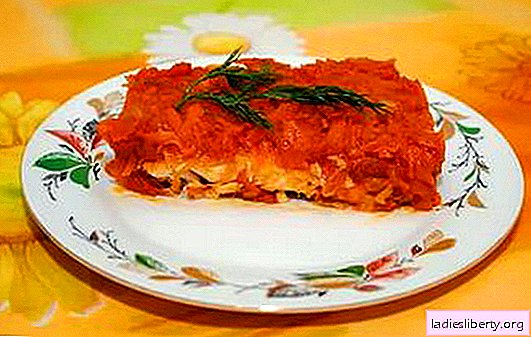
Wheatgrass - a general description
Perennial herbaceous plant Wheatgrass belongs to the family of cereals. Has a long horizontal rhizome with outgoing shoots. These processes of wheatgrass and multiplies. The stems of the plant are erect, reaching a height of 40 cm to 1.5 m. The leaves are long, linear; rough plate on top. The flowers are small, inconspicuous, collected in a spike-shaped inflorescence from 7 to 15 cm long. A wheatgrass blooms in the May-June period, and the fruit develops in the form of a grain in September.
Some wheatgrass species are difficult to eradicate weeds that can grow very quickly, crowding out other crops. After all, the rhizome of the plant stretches for several tens of meters, giving birth to ever new individuals.
Wheatgrass - types and places of growth
The small genus includes about 70 species, distributed mainly in the temperate regions of the Northern Hemisphere: practically throughout Eurasia and the northwestern regions of North America. In Russia, the most famous species is creeping wheatgrass, which covers gardens, vacant lots, vegetable gardens, edges, fields, meadows, etc. Farmers use it as feed for farm animals.
Some types of wheatgrass also found their application in the economy. For example, wheatgrass grassland is planted to fix sand and coastal dunes. And medium and elongated wheat grass are widely used in breeding for crossbreeding with wheat. Thus, botanists managed to develop frost-resistant, parasite-resistant wheatgrass hybrid wheat varieties that produce better grain.
Wheat grass - healing properties
Of particular importance in folk medicine are the rhizomes of the creeping wheatgrass. As a result of laboratory studies, it was revealed that the weed species is rich in nutrients. It contains essential fatty oils and organic acids, aveline, levulose, fructose, mucus, carotene, vitamin C and other components.
Ancient people widely used the healing power of this plant, which has diuretic, anti-inflammatory and analgesic effects and helps fight urinary tract diseases, cystitis, nephritis, and also helps to remove stones from the bladder. Creeping wheatgrass perfectly eliminates edema, including internal, gouty and arthritic pains. It is used as an expectorant, emollient and enveloping agent for tuberculosis, bronchitis, pneumonia, gastritis, enterocolitis, and protracted constipation.
In addition, wheat grass has a slight hypotensive effect and helps to cope with insomnia. For the treatment of hemorrhoids, it is recommended to use enemas from a decoction of wheatgrass rhizomes.
Wheatgrass - dosage forms
As noted above, the people use rhizomes of plants, which are harvested in late summer or early autumn, as medicinal raw materials. Before drying, the rhizomes must be thoroughly cleaned of stems, roots and leaf sheaths, rinsed in cold water and proceed to harvesting for the winter.
Drying wheatgrass raw materials is recommended at a temperature of 60 degrees in the oven or special dryers, periodically stirring and turning the extract. Ready rhizomes should break with a bang, without deforming. Shelf life - no more than 3 years.
Wheatgrass - recipes of traditional medicine
- A decoction of rhizomes (1:10) is consumed by 2 tables. tablespoons three times a day as a laxative and diuretic. For its preparation, it is necessary to add two teaspoons of the extract in 200 ml of boiling water, simmer for 3-5 minutes over low heat, then squeeze the raw materials, cool and take according to the above recommendations.
- For arthritis, gout, osteochondrosis and neuralgia, use an infusion: two tables. l rhizomes pour overnight 500 ml of boiling water. Insist under the lid, and in the morning the infusion is filtered and divided into 3 doses per day.
- Juice from fresh leaves is advisable to use for gallstone and urolithiasis. Usually they drink 150-200 ml three times a day for 14-20 days.
- Decoction for gastrointestinal diseases: 60 gr. dry roots are added to a liter of boiling water, languished on the stove for about 5 minutes, then insist for about an hour and consumed, having previously filtered, 100 ml each. decoction three times a day.
- With furunculosis, heavy menstruation and uterine bleeding, it is recommended to drink a strong broth of creeping wheatgrass. He also prepare, only instead of 60 gr. dry extract add 120 gr. rhizomes. Such a decoction will help eliminate constipation and reduce hemorrhoidal foci (using enemas).
Wheatgrass - contraindications
There are no contraindications to the use of preparations based on wheatgrass creeping. However, administration should be discontinued if diarrhea appears or an oppressed state develops that affects performance.
Comments











